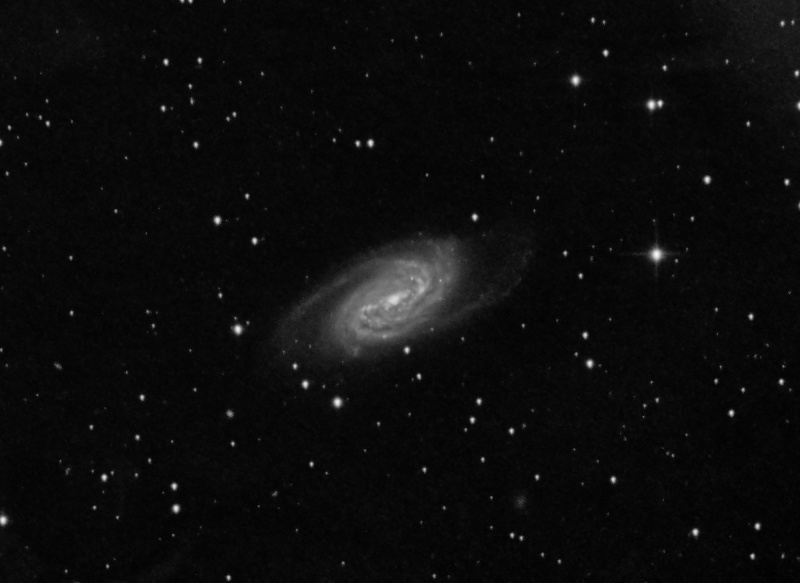NGC 2903 is a barred spiral galaxy in the constellation Leo, about 20 million light years from Earth. Charles Messier missed this object when compiling his catalog and was discovered in 1784 by William Herschel.
NGC 2903 is a galaxy in some way similar to the Milky Way. Its size is only slightly smaller than our galaxy, with an area of about 80,000 light years, and also has central bar. A bright star cloud within NGC 2903, receives its own name NGC 2905.
The central region of the galaxy shows an exceptional rate in terms of star formation, concentrated in a ring around the nucleus, which has a diameter of more than 600 parsecs and includes not only a considerable number of young stars but also a number of emission nebulae with luminosities comparable to those of the Tarantula Nebula in the Large Magellanic Cloud, and is also bright at radio frequencies, infrared, ultraviolet and X-ray, which has made NGC 2903 is considered a starburst galaxy. There is also some star formation activity in his bar.
As it happens in many other isolated late-type galaxies, neutral hydrogen in NGC 2903 extends much more than the visible area of the galaxy in the optical, extending three times more. It also has at least three small satellite galaxies: one a dwarf spheroidal galaxy, and another at least somewhat more than 60 kiloparsecs from it, a distance similar to that of the Small Magellanic Cloud, which appears to be made largely dark matter with a mass 100 million times the Sun (Text from Wikipedia)  Please,
compare the present image with this another one taken using C9.25 telescope. (click on image to open a new window).
 NGC 2903 es una galaxia espiral barrada en la constelación de Leo, a unos 20 millones de años luz de la Tierra. Charles Messier la olvidó al confeccionar su catálogo y fue descubierta en 1784 por William Herschel.
NGC 2903 es una galaxia en varios aspectos similar a la Vía Láctea. Su tamaño es sólo un poco menor que nuestra galaxia, con una extensión de unos 80.000 años luz, y también tiene barra central. Una brillante nube estelar dentro de NGC 2903, recibe su propio nombre de catálogo NGC 2905.
La región central de la galaxia muestra una excepcional tasa de actividad en cuanto a formación de estrellas se refiere -concentrada en un anillo alrededor del núcleo, que tiene un diámetro de algo más de 600 parsecs e incluye no sólo un considerable número de estrellas jóvenes y luminosas sino también cierto número de nebulosas de emisión con luminosidades comparables a las de la Nebulosa de la Tarántula de la Gran Nube de Magallanes-, y también es brillante en frecuencias de radio, infrarrojo, ultravioleta y rayos X, lo que ha hecho que NGC 2903 sea considerada una galaxia con brote estelar. Hay también cierta actividad de formación estelar en su barra.
Cómo sucede en otras muchas galaxias de tipo tardío aisladas, el hidrógeno neutro de NGC 2903 se extiende mucho más que el área visible de la galaxia en el óptico, extendiéndose tres veces más que la segunda. Además, tiene al menos tres pequeñas galaxias satélite: una de ellas una galaxia enana esferoidal, y otra a al menos algo más de 60 kiloparsecs de ella -una distancia similar a la de la Pequeña Nube de Magallanes- que parece estar hecha en buena parte de materia oscura, con una masa de 100 millones de veces la del Sol. (Texto procedente de Wikipedia)  Por favor, compara la imagen con esta otra tomada usando el telescopio C9.25 (click en la imagen para abrir una nueva ventana). |


